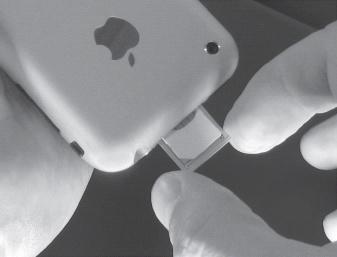Chapter 7. UNLOCKING AND ACTIVATION
In the world of GSM-based cellular providers, it is the SIM card, not the phone, that determines what network you connect to. Some people have a collection of GSM phones and swap their SIM card between them (Figure 7-1). It is even a good backup strategy for the mobile businessperson to have two phones, in case one breaks or runs out of battery charge.

Because the iPhone is a GSM phone, it is physically capable of connecting to most GSM networks.
Many mobile phones around the world are subsidized. The manufacturer expects to make $300USD, $500, or more on the phone. Instead, it is sold for $100, $200, or given away “free” for consumers who agree to be locked in to a contract for a year or longer. You pay for part of your phone, and your mobile carrier pays for part of it, in exchange for having you as a customer for a while. And if you leave early, you have to pay to break your contract.
You’d think that this would be enough for people to stick with a carrier. But there’s also exclusivity. Any mobile phone vendor is free to make exclusive deals with carriers, so that they can have a limited-time “exclusive” on a hot new phone. Yet even when they sell the same phone to all carriers in a market, they still have a habit of locking the phones, so that phones sold by a given carrier will work only with SIM cards from that carrier.
Methods ...
Get iPhone Hacks now with the O’Reilly learning platform.
O’Reilly members experience books, live events, courses curated by job role, and more from O’Reilly and nearly 200 top publishers.

